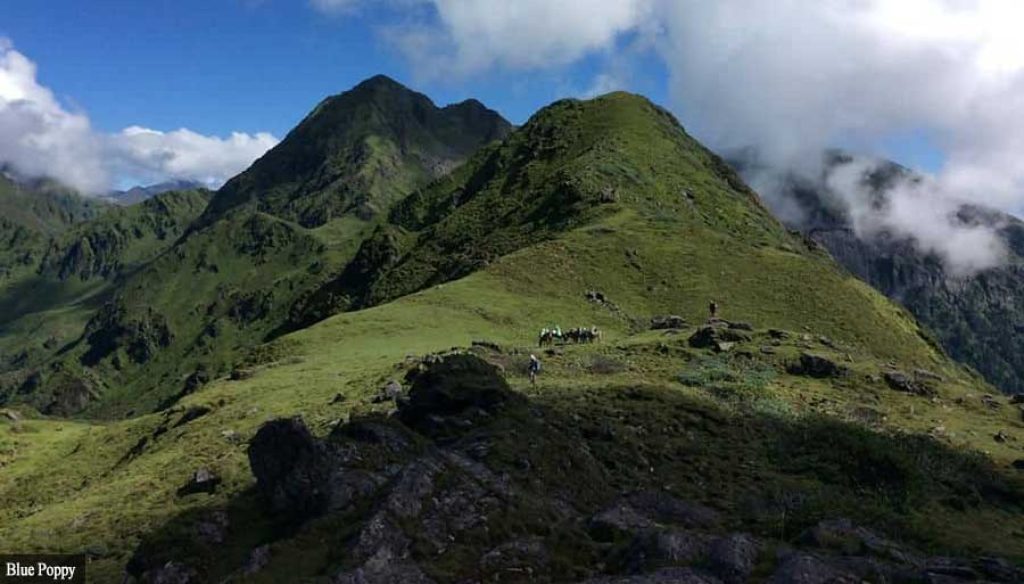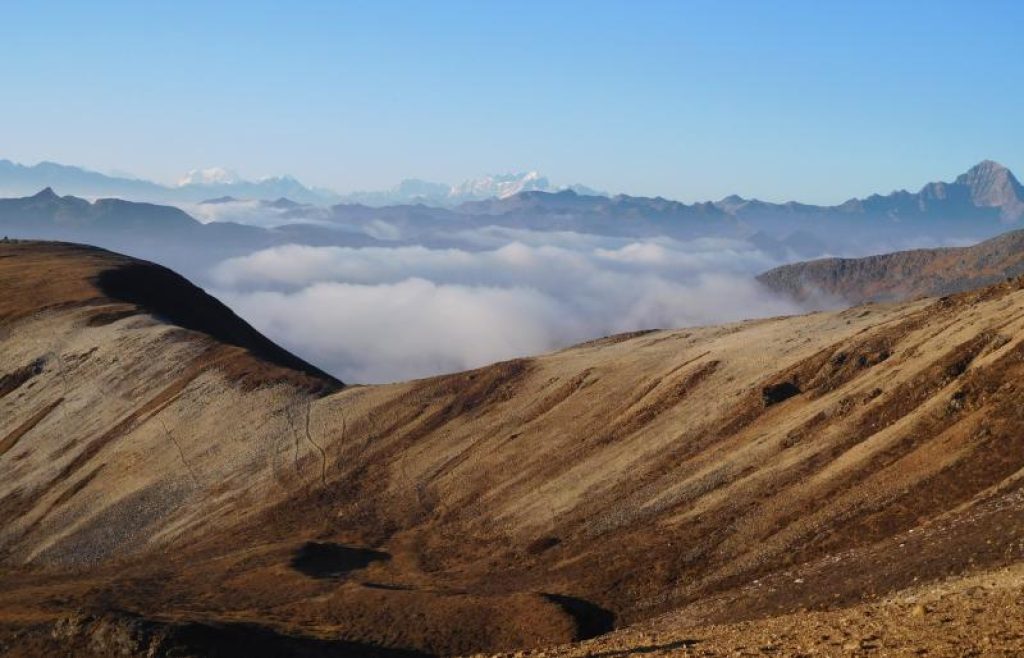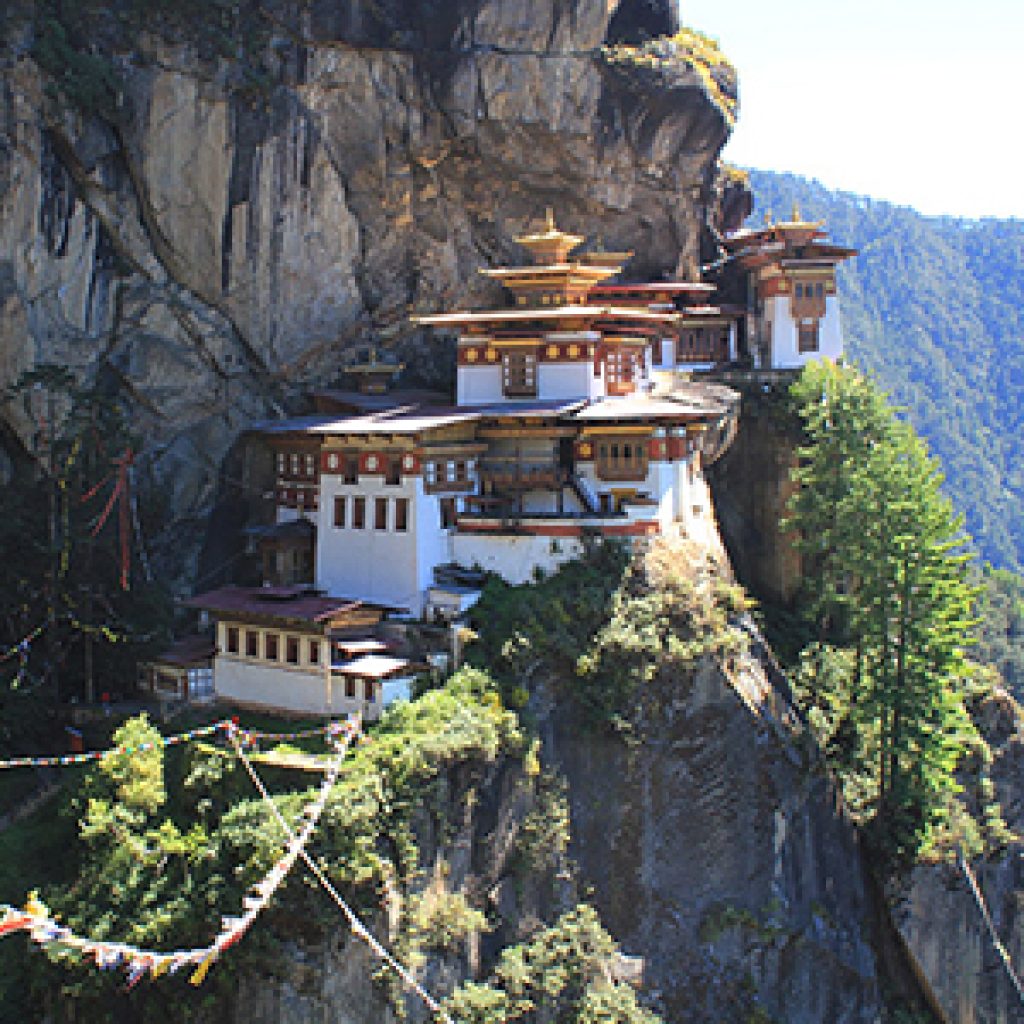
Tergo La is located in Bhutan. It consists of scenes such as valleys, mountain paths, rivers, forests, and farmland. It is a place to behold. This article is developed to help you appreciate the history of Tergo La Trek and its beautiful sight. It will also explain the trekking Tergo La process and its potential dangers in detail.
Brief History
In 2015, the Tergo La Trek in Bhutan was first made accessible to tourists. Hikers are transported through the Haa Valley and across the Tergo La pass. This area is located at a height of 4,850 m (15,912 ft). Beautiful vistas of the Himalayan Mountains, including Mount Jomolhari and Mount Jichu Drake, may be seen while on the trek.
It has been suggested that local peasants have used the path as a commerce path between Haa and Paro for centuries. The journey has grown more well-liked among tourists in recent years due to its breathtaking landscape. The Tergo La Trek became accessible to tourists in 2015 thanks to the Bhutan Tourism Council (TCB). Since then, the TCB has marketed the trek to draw more tourists to Bhutan. CNN Travel listed the Tergo La Trek among the top 23 hiking routes in the world in 2023.
Description of the Sight

The majestic Jhomolhari and Jitchu Drake peaks and the surrounding Himalayan ranges may all be seen from the Tergo-La pass. A modest and typical Bhutanese village and a temple honoring the local deity, Tsheringma, are also located near the pass
Despite being remote, the pass is reachable by road, and travelers interested in Bhutan’s breathtaking landscape and rich history frequently visit it. The Tergo-La pass may prove tricky to drive across, though, and calls for knowledgeable drivers and well-kept vehicles due to its high height and steep inclines.
In a nutshell, the Tergo-La Pass is a breathtaking location that beautifully displays the distinctive nature and history of the Haa district and is a must-see for anybody traveling through Bhutan.
Some of these beautiful sights are highlighted below:
- Haa Valley: The Haa Valley is a colorful, green valley with several species of wildlife and plants. It is a lovely area for hiking and exploring.
- Mount Jomolhari: This is commonly called “The Mountain of Snow Maidens.” It is one of Bhutan’s most revered mountains. The sight of it is breathtaking, particularly when viewed from Tergo La pass.
- Mount Jichu Drake: Another stunning mountain that can be viewed from the Tergo La crossing is Mount Jichu Drake. The snow lion, an imaginary creature in Bhutanese mythology, is claimed to reside there.
- The Pamo River: The Haa Valley is traversed by the crystal-clear, azure Pamo River. The area is well-liked for sunbathing and canoeing.
- The Sakteng Wildlife Sanctuary: This is a protected region where several wildlife, such as black bears, snow leopards, and takins, can be found. It is an excellent place to see wildlife.
Ways to Get There
Haa, a rural valley in western Bhutan, is where the Tergo La Trek begins. Paro International Airport, roughly three hours from Haa, is the closest airport. You must first fly into Nepal’s capital, Kathmandu, and then board an additional flight to Paro because there are no direct flights from countries other than Bhutan to Paro.
You must change to a van or cab to get to Haa after arriving in Paro. The distance traveled by bus and taxi takes roughly 4 and 2 hours, respectively.
You must climb for approximately one hour to get to the Tergo La Trek’s starting point from Haa town. The town of Katsho is where the trek begins.
The abovementioned ways to get to Tergo La are simplified into the following bullet points.
- Land at Paro International Airport in Bhutan.
- Travel to Haa Town by bus or cab.
- To get to the trailhead of Katsho Hamlet, you need to hike for approximately one hour.
- Begin your journey.
Details on hiking Mount Toubkal
One of Haa’s most breathtaking and popular hiking trails is Tergo-La Trek. The journey begins in Haa and concludes there.
Because to the country’s relative remoteness and the demand for visitor permissions, Bhutan’s trails are beautiful and ready for exploration. One of the less popular trails in the nation is Tergo-La Trek, located in the Haa Valley.
Tergo-La, which translates to “hidden treasure door” in Dzongkha, is a hike that lives up to its name by taking hikers through enchanting, remote trails that pass through picturesque farmlands, pine forests, and steep mountain paths while providing views of Mt. Kanchenjunga, the third-highest peak in the world. The somewhat nomadic yak farming groups are the only ones who utilize the path, which is undeveloped and receives very little traffic. The Tergo-La trek’s height varies between 3500 m to 4150 m and will test the physical and mental stamina of hikers.
When to Go: Weather and Season
Tergo La Trek is best visited in springtime (March to May) or autumn (September to November). These times of year see moderate weather and no snow on the paths. Other noteworthy tips about each of the seasons in Tergo La are mentioned below:
Springtime (March to May): The climate is pleasant and sunny throughout this time of year. The blossoming plants are richly flourishing, and the trails are snow-free. There are, however, some drawbacks to this season. This is Tergo La Trek’s busiest time of year, so it might be packed. It’s possible that lodging and other services will cost more.
Autumn (September to November): The climate is still pleasant and sunny throughout this time of year. The trails are snow-free. The crowds have diminished. But given that the hours of daylight are shortened and the hours of darkness are colder, this season might not be ideal for you.
Winter (December to February): The walk is less popular during this time of year. There can be cheaper rates for lodging and other services. With mountains covered in snow and crystal-clear skies, the surroundings are breathtaking. It does, however, have drawbacks, much like previous seasons. It may be chilly and snowing outside. The trails could be icy and hazardous. You can survive this season if you are adequately ready for weather conditions and high elevations.
The ideal time to visit Tergo La Trek ultimately relies on your preferences and the trekking experience you’re searching for.
Accommodation

Trekkers on the Tergo La Trek have a variety of decent lodging places when they arrive. These lodging places consist of:
Hotels: There are several lodging options in Haa town and a few in the communities along the trip. Private rooms, hot baths, and restaurants are just a few of these hotels’ services.
Homestays: Haa Valley is home to a handful of homestays. Homestays are a terrific opportunity to get to know the locals and explore Bhutan more authentically.
Camping: The Tergo La Trek also offers the option of camping. There are a few campgrounds along the pathway, and if you have the right equipment, you may camp in the wilderness.
The price of lodging in Haa Valley varies according to the kind of lodging you select. The most expensive choice is a hotel, followed by lodges and homestays. Although camping is the most affordable choice, it’s vital to consider the cost of supplies and transportation.
Booking your lodging in Haa Valley in advance is crucial, especially if you intend to hike during the busiest months (March to May and September to November). Due to their propensity to fill up rapidly, hotels and lodges are particularly affected by this.
Food and Water
Maintaining a healthy diet and fluid intake is crucial when hiking a long distance. Similar to how a rumbling in your stomach does not always portends good news, so does a rumbling in the mountains. You want to trek comfortably, meaning you need nourishment and energy. Responsible dietary choices and hydration help you maintain proper muscular function, maintain mental focus on challenging terrain, and refresh yourself on hot days.
A balanced diet is recommended, which excludes processed foods and calls for regular hydration.
Foods and drinks can be found on Tergo La. These items are available at stations along the route. You may still bring your food, though. To prevent getting sick, ensure food is thoroughly prepared and properly covered.
Tergo La Trek water is generally safe to drink. Additionally, it is advised that you carry your water or boil the water before using it. Iodine tablets and a water filter can both be used to purify water.
Challenges When Hiking Tergo La Trek
In as much as Tergo La Trek is an exciting and rewarding journey, it has its challenges that sometimes scare people from attempting it. These challenges are as follows:
Altitude sickness: A typical issue at high altitudes is altitude sickness, which can be highly dangerous. Headache, nausea, throwing up, dizziness, and difficulty breathing are signs of altitude sickness. Consuming lots of water and ascent to high elevations is imperative. It is also crucial to descend quickly to a lower altitude if you start to develop symptoms of altitude sickness.
Cold Weather: High elevations can experience freezing weather, particularly at night. Please make sure you pack a sleeping bag rated for chilly weather and dress appropriately.
Physical stamina: The Tergo La Trek is strenuous. Before beginning the walk, examine yourself to see if you are in the best physical shape. You will need to have enough physical strength to trek Tergo La.
Mental preparation: The Tergo La Trek is challenging, and it is vital to be mentally prepared for the challenges. It is also important to set realistic expectations and to be patient.
Tips to know when hiking Tergo La Trek
- It is recommended that all travelers have travel insurance that includes medical coverage.
- Similarly, we advise you to ensure the insurance covers any activities you plan to engage in while engaging on the Tergo La Trek.
- When visiting Tergo La, there is no requirement to get any additional immunizations. However, it would help if you spoke with your doctor about receiving a vaccination against tropical illnesses.
- If you intend to go high-altitude hiking or mountaineering while visiting Tergo La, you are advised to enroll in fitness training programs.
- When dining out, remember to make sure that vegetables and fruits have been rinsed in distilled water or have been peeled. Food that has spent much time outside in the open should be avoided.
- Always choose boiling and then chilled water, treated water, or sealed water from a reputable brand to ensure that the water you drink is pure.
- Always have a water bottle when trekking or leaving the city/town.
- When you visit Tergo La during the summer, always have repellent on hand and use it.
Potential Dangers
There are potential dangers of hiking Tergo La Trek. Some of these potential dangers are mentioned below:
Rash: Rashes are frequent on the Tergo La Trek, particularly if you are sweating a lot. Maintaining clean, dry skin is crucial, and use the rash ointment as soon as you start to develop a rash.
Slick trails: The Tergo La Trek’s trails can be dangerous, especially after rain or snow. Trekking poles should be used, and caution should be taken.
Wild creatures: Numerous wild animals, such as snow leopards, polar bears, and takins, can be found nearby. While trekking, staying alert to your surroundings and making noise is vital. Any wild animals you may run into will be scared off by this.
Infrastructure Deficit: The Tergo La Trek has less developed infrastructure than other, more well-known hiking locations. Due to the lack of lodging, amenities, and supplies along the route, trekkers must be self-sufficient and well-prepared.
Conclusion
The Tergo La Trek is a trip you are not likely to forget. Hikers looking for a challenging and rewarding experience might consider the Tergo La Trek. Although it is a difficult journey, the benefits are worthwhile. The people are friendly, the historical heritage is rich, and the scenery is breathtaking. The Tergo La walk is a fantastic choice if you’re searching for a demanding yet rewarding walk in Bhutan.

